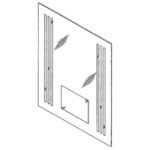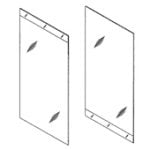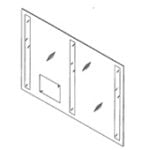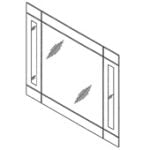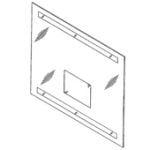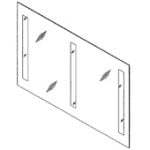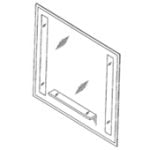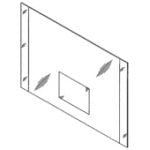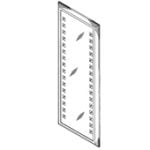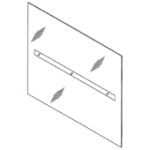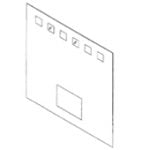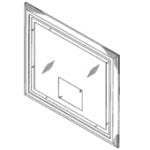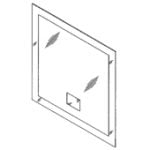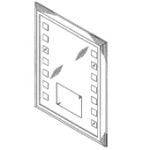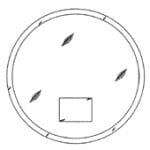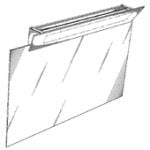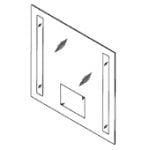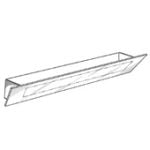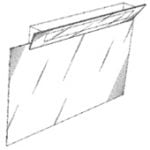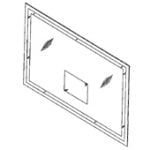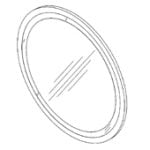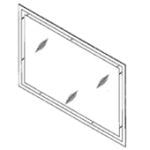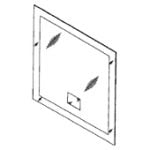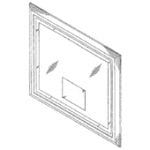The Importance of Patents
Since the invention of our very first product, we’ve been committed to ongoing investment in research and development to bring forth innovative new ideas for our customers. Our employees have answered that call, and to date, their creativity and ingenuity has garnered 61 patents that protect the intellectual property behind these products.
Patents ensure our investments are protected, and give us confidence to continue developing new products. Patents protect our employees’ jobs, as demand for our products is safeguarded from would-be infringements. Patents support the American economy, ensuring manufacturing remains local rather than be shipped overseas. And patents honor the women and men whose creativity and innovative thinking benefit us all.
To understand which Electric Mirror products are patented, review the lists below, or look for the Patent Icon on our product pages.
Frequently Asked Questions
References & Resources:
¹ Information obtained from World Intellectual Property Organization, www.wipo.int.
² Information obtained from United States Patent and Trademark Office, www.uspto.gov.
³ Information obtained from United States International Trade Commission
Our Patents
Click through the tabs below to view the complete list of our patented products, utilities and designs.
United States Patent Marking for Electric Mirror® brand products. Each list of patents by product name applies to all package counts, unless stated differently. Items listed below may be sold individually or as part of a combination product. If you have any questions about this list, please contact Electric Mirror at 425 776-4946.
| Category | Product Name | Product is Protected by |
|---|---|---|
| Lighted Mirror | Boulevard™ Lighted Mirror | US 8,835,789 B2, US 9,686,673 B2, US D591,054 S, US D606,227 S, US D617,101 S |
| Lighted Mirror | Candela™ Lighted Mirror (Cordova™ Mirrors Brand) |
US 7,805,260 B2, US 8,835,789 B2, US 9,307,849, US 9,686,673 B2, US D547,072 |
| Lighted Mirror | Celebration™ Lighted Mirror | US 7,805,260 B2, US 8,835,789 B2, US 9,307,849, US 9,686,673 B2, US D545,067 S |
| Lighted Mirror | Celestino™ Lighted Mirror (Cordova™ Mirrors Brand) |
US 7,559,668 B1, US 7,805,260 B2, US 8,835,789 B2, US 9,307,849, US 9,686,673 B2 |
| Lighted Mirror | eFinity™ Lighted Mirror | US 7,805,260 B2, US 7,853,414 B2, US 8,835,789 B2, US 9,307,849, US 9,686,673 B2, US 9,921,390 B1, US 9,933,595 B1, US 10,502,928 B1 |
| Lighted Mirror | Eliseo™ Lighted Mirror (Cordova™ Mirrors Brand) |
US 7,805,260 B2, US 8,835,789 B2, US 9,686,673 B2, US D719,747 S, US 7,853,414 B2, US 9,921,390 B1, US 9,933,595 B1, US 10,502,928 B1 |
| Lighted Mirror | Elite™ Lighted Mirror | US 7,853,414 B2, US 8,835,789 B2, US 9,686,673 B2, US 9,921,390 B1, US 9,933,595 B1, US 10,502,928 B1 |
| Lighted Mirror | Estella™ Lighted Mirror (Cordova™ Mirrors Brand) |
US 7,805,260 B2, US 7,853,414 B2, US 8,835,789 B2, US 9,175,844, US 9,686,673 B2, US 9,921,390 B1, US 9,933,595 B1, US 10,502,928 B1 |
| Lighted Mirror | Eternity™ Lighted Mirror | US 7,805,260 B2, US 7,853,414 B2, US 8,835,789 B2, US 9,686,673 B2, US 9,921,390 B1, US 9,933,595 B1, US 10,502,928 B1, US D719,747 S |
| Lighted Mirror | Fusion™ Lighted Mirror with shelf | US 7,805,260 B2, US 8,835,789 B2, US 9,307,849, US 9,686,673 B2, US D547,072 S |
| Lighted Mirror | Granada™ Lighted Mirror (Cordova™ Mirrors Brand) |
US 7,805,260 B2, US 8,835,789 B2, US 9,307,849, US 9,686,673 B2, US D704,939 S |
| Lighted Mirror | Integrity™ Lighted Mirror | US 7,559,668 B1, US 7,805,260 B2, US 7,853,414 B2, US 7,853,414, US 8,835,789, US 9,307,849 B2, US 9,921,390 B1, US 9,933,595 B1, US 10,502,928 B1 |
| Lighted Mirror | Momentum™ Lighted Mirror | US 7,805,260 B2, US 7,853,414 B2, US 8,835,789 B2, US 9,307,849, US 9,686,673 B2, US 9,921,390 B1, US 9,933,595 B1, US 10,502,928 B1 |
| Lighted Mirror | Novo-4™ Lighted Mirror | US 7,805,260 B2, US 8,835,789 B2, US 9,307,849, US 9,686,673 B2, US D545,067 S |
| Lighted Mirror | Novo™ Lighted Mirror | US 7,805,260 B2, US 8,835,789 B2, US 9,307,849, US 9,686,673 B2, US D545,574 S |
| Lighted Mirror | Nuria™ Lighted Mirror (Cordova™ Mirrors Brand) |
US 7,805,260 B2, US 8,835,789 B2, US 9,307,849, US 9,686,673 B2, US D545,574 S |
| Lighted Mirror | Ovation™ Lighted Mirror | US 7,805,260 B2, US 8,835,789 B2, US 9,307,849, US 9,686,673 B2, US D545,574 S |
| Lighted Mirror | Quantum™ Lighted Mirror | US 7,805,260 B2, US 8,835,789 B2, US 9,307,849, US 9,686,673 B2, US D704,939 S |
| Lighted Mirror | Radiance™ Lighted Mirror | US 10,948,176 B1 and US 11,825,964 B1 |
| Lighted Mirror | Radican™ Lighted Mirror | US 7,805,260 B2, US 8,835,789 B2, US 9,307,849, US 9,686,673 B2, US D546,073 S |
| Lighted Mirror | Renato™ Lighted Mirror (Cordova™ Mirrors Brand) |
US 7,805,260 B2, US 8,835,789 B2, US 9,307,849, US 9,686,673 B2 |
| Lighted Mirror | Reflection™ Lighted Mirror | US 7,805,260 B2, US 8,835,789 B2, US 9,307,849, US 9,686,673 B2 |
| Lighted Mirror | Serenity™ Lighted Mirror | US 7,559,668 B1, US 7,805,260 B2, US 8,835,789 B2, US 9,307,849, US 9,686,673 B2 |
| Lighted Mirror | Silhouette™ Lighted Mirror | US 7,805,260 B2, US 7,559,668 B1, US 7,805,260, US 8,835,789 B2, US 9,307,849, US 9,686,673 B2 |
| Lighted Mirror | Solia™ Lighted Mirror (Cordova™ Mirrors Brand) |
US 7,805,260 B2, US 8,835,789 B2, US 9,307,849, US 9,686,673 B2, US D545,574 S |
| Lighted Mirror | Tiempo™ Lighted Mirror (Cordova™ Mirrors Brand) |
US 7,805,260 B2, US 7,853,414 B2, US 8,835,789 B2, US 9,307,849, US 9,686,673 B2, US 9,921,390 B1, US 9,933,595 B1, US 10,502,928 B1 |
| Lighted Mirror | Tranquilidad™ Lighted Mirror (Cordova™ Mirrors Brand) |
US 7,805,260 B2, US 7,559,668 B1, US 8,835,789 B2, US 9,307,849, US 9,686,673 B2 |
| Lighted Mirror | Trinity™ Lighted Mirror | US 7,805,260 B2, US 7,853,414 B2, US 8,835,789 B2, US 9,175,844, US 9,686,673 B2, US 9,921,390 B1, US 9,933,595 B1, US 10,502,928 B1 |
| Lighted Mirror | Triple Fusion™ Lighted Mirror | US 7,805,260 B2, US 8,835,789 B2, US 9,686,673 B2, US D546,566 S |
| Lighted Mirror | Valeria™ Lighted Mirror (Cordova™ Mirrors Brand) |
US 7,559,668 B1, US 7,805,260 B2, US 8,835,789 B2, US 9,307,849, US 9,686,673 B2, US 7,853,414 B2, US 9,921,390 B1, US 9,933,595 B1, US 10,502,928 B1 |
| Lighted Mirror TV | Celebration™ Lighted Mirror TV | US 7,805,260 B2, US 8,099,247, US 8,880,360 B2, US 9,307,849, US 9,845,537, US 10,106,896 B2, US D545,067 S |
| Lighted Mirror TV | eFinity™ Lighted Mirror TV | US 7,805,260 B2, US 7,853,414 B2, US 8,099,247, US 8,880,360 B2, US 9,307,849, US 9,845,537, US 9,921,390 B1, US 9,933,595 B1, US 10,106,896 B2, US 10,502,928 B1 |
| Lighted Mirror TV | Eternity™ Lighted Mirror TV | US 7,805,260 B2, US 7,853,414 B2, US 8,099,247, US 8,880,360 B2, US 9,845,537, US 9,921,390 B1, US 9,933,595 B1, US 10,106,896 B2, US D689,701 S, US 10,502,928 B1 |
| Lighted Mirror TV | Fusion™ Lighted Mirror TV | US 7,805,260 B2, US 8,099,247, US 8,880,360 B2, US 9,307,849, US 9,845,537, US 10,106,896 B2, US D595,511 S |
| Lighted Mirror TV | Impression™ Lighted Mirror TV | US 7,805,260, US 8,099,247, US 8,880,360 B2, US 9,307,849, US 9,845,537, US 10,106,896 B2 |
| Lighted Mirror TV | Integrity™ Lighted Mirror TV | US 7,559,668 B1, US 7,805,260 B2, US 7,853,414 B2, US 8,099,247, US 8,880,360 B2, US 9,307,849, US 9,845,537, US 9,921,390 B1, US 9,933,595 B1, US 10,106,896 B2, US D623,425 S, US D704,938 S, US 10,502,928 B1 |
| Lighted Mirror TV | Momentum™ Lighted Mirror TV | US 7,805,260 B2, US 8,099,247, US 8,880,360 B2, US 9,307,849, US 7,853,414 B2, US 9,845,537, US 9,921,390 B1, US 9,933,595 B1, US 10,106,896 B2, US D559,553 S, US 10,502,928 B1 |
| Lighted Mirror TV | Novo™ Lighted Mirror TV | US 7,805,260 B2, US 8,099,247, US 8,880,360 B2, US 9,307,849, US 9,845,537, US 10,106,896 B2, US D545,574 S, US D547,073 S |
| Lighted Mirror TV | Novo-4™ Lighted Mirror TV | US 7,805,260 B2, US 8,099,247, US 8,880,360 B2, US 9,307,849, US 9,845,537, US 10,106,896 B2 |
| Lighted Mirror TV | Quantum™ Lighted Mirror TV | US 7,805,260 B2, US 8,099,247, US 8,880,360 B2, US 9,845,537, US 10,106,896 B2, US D704,939 S |
| Lighted Mirror TV | Reflection™ Lighted Mirror TV | US 7,805,260 B2, US 8,099,247, US 8,880,360 B2, US 9,307,849, US 9,845,537, US 10,106,896 B2, US D559,557 S |
| Lighted Mirror TV | Serenity™ Lighted Mirror TV | US 7,559,668 B1, US 7,805,260 B2, US 8,880,360 B2, US 9,307,849, US 9,845,537, US 10,106,896 B2 |
| Lighted Mirror TV | Silhouette™ Lighted Mirror TV | US 7,559,668 B1, US 7,805,260 B2, US 8,099,247, US 8,880,360 B2, US 9,307,849, US 9,845,537, US 10,106,896 B2, US D559,555 S, US RE41,978 E |
| Lighted Mirror TV | Trinity™ Lighted Mirror TV | US 7,805,260 B2, US 8,099,247, US 8,880,360 B2, US D559,560 S, US 7,853,414 B2, US 9,845,537, US 9,921,390 B1, US 9,933,595 B1, US 10,106,896 B2, US 10,502,928 B1 |
| Lighted Mirror TV | Triple Fusion™ Lighted Mirror TV | US 8,099,247, US 8,880,360 B2, US 9,307,849, US 7,805,260 B2, US 9,845,537, US 10,106,896 B2, US D545,575 S, US D546,566 S |
| Bathroom Mirror TV | Loft™ Bathroom Mirror TV | US 8,880,360 B2, US 10,106,896 B2 |
| Bathroom Mirror TV | Stanford™ Bathroom Mirror TV | US 8,880,360 B2, US 10,106,896 B2 |
| Entertainment Mirror TV | Loft™ Entertainment Mirror TV | US 10,634,910 B2 |
| Entertainment Mirror TV | Stanford™ Entertainment Mirror TV | US 10,634,910 B2 |
| Disappearing Mirror TV | US 10,968,523 B1 | |
| TV Cover | Eclipse TV Cover | US 10,972,696 B1 |
| Mirrored Cabinet | Ambiance™ Mirrored Cabinet | US 8,910,402 B2, US 10,106,896 B2 |
| Mirrored Cabinet | Ascension™ Mirrored Cabinet | US 8,910,402 B2, US 10,106,896 B2 |
| Mirrored Cabinet | Luminous™ Mirrored Cabinet | US 8,910,402 B2, US 10,106,896 B2, US D704,939 S |
| Mirrored Cabinet | Re-Creation™ Mirrored Cabinet | US 8,910,402 B2, US 9,407,261 B2, US 10,106,896 B2, US D704,939 S |
| Mirrored Cabinet | Seamless™ Mirrored Cabinet | US 8,910,402 B2, US 9,407,261 B2, US 10,106,896 B2 |
| Mirrored Cabinet | Visionary™ Mirrored Cabinet | US 8,910,402 B2, US 9,407,261 B2, US 10,106,896 B2 |
| Wardrobe Mirror | Boutique™ Wardrobe Mirror | US 7,559,668 B1, US 8,835,789 B2, US 9,307,849, US 9,686,673 B2 |
| Wardrobe Mirror | Candela™ Wardrobe Mirror (Cordova™ Mirrors Brand) |
US 8,835,789 B2, US 9,307,849, US 9,686,673 B2 |
| Wardrobe Mirror | Fusion™ Wardrobe Mirror, US 9,307,849 | US 8,835,789 B2, US 9,686,673 B2 |
| Wardrobe Mirror | Integrity™ Wardrobe Mirror | US 7,559,668 B1, US 7,853,414 B2, US 8,835,789 B2, US 9,307,849, US 9,686,673 B2, US 9,921,390 B1, US 9,933,595 B1, US 10,502,928 B1 |
| Wardrobe Mirror | Reflection™ Wardrobe Mirror | US 8,835,789 B2, US 9,307,849, US 9,686,673 B2 |
| Wardrobe Mirror | Renato™ Wardrobe Mirror (Cordova™ Mirrors Brand) |
US 8,835,789 B2, US 9,307,849, US 9,686,673 B2 |
| Wardrobe Mirror | Valeria™ Wardrobe Mirror (Cordova™ Mirrors Brand) |
US 7,559,668 B1, US 7,853,414 B2, US 8,835,789 B2, US 9,307,849, US 9,686,673 B2, US 9,921,390 B1, US 9,933,595 B1, US D704,938 S, US 10,502,928 B1 |
| Technology | Mirror products that include Seamless™ clock. | US 10,634,910 B2 |
| Technology | Any product that includes Ava™ color temperature or color temperature and brightness control. | US 10,939,522 B1, US 11,737,182 B1, US 11,778,706 B1 |
| Technology | Mirror products that are enabled to stream audio or video from a wireless device. | US 10,972,905 B1, US 11,496,887 B1 |
| Technology | Mirror products that include a battery powered nightlight. | US 11,067,268 B1 |
United States Patent Marking for Electric Mirror® brand products. Each list of patents by product name applies to all package counts, unless stated differently. Items listed below may be sold individually or as part of a combination product. If you have any questions about this list, please contact Electric Mirror at 425-776-4946.
| Patent Number | Products Protected |
|---|---|
| US 7,559,668 B1
*Patent is under license to Electric Mirror |
Integrity™, Serenity™, and Silhouette™ Lighted Mirrors and Integrity™, Serenity™, and Silhouette™ Lighted Mirror TVs, and Boutique™ and Integrity™ Wardrobe Mirrors.
Cordova™ Mirrors Products: Celestino™, Tranquilita™, Valeria™ Lighted Mirrors and Valeria™ Wardrobe Mirror. |
| US 7,805,260 B2 | Celebration™, eFinity™, Eternity™, Fusion™, Impression™, Integrity™, Momentum™, Novo™, Novo-4™, Ovation™, Quantum™, Reflection™, Serenity™, Silhouette™, Trinity™, and Triple Fusion™ Lighted Mirrors and Lighted Mirror TVs. |
| US 7,853,414 B2, US 9,921,390 B1, US 9,933,595 B1, US 10,502,928 B1 |
eFinity™, Elite™, Eternity, Integrity™, Momentum™, and Trinity™ Lighted Mirrors and Lighted Mirror TVs, and Integrity™ Wardrobe Mirror, and Cordova™ Mirrors Products: Estella™, Eliseo™, Tiempo™, and Valeria™ Lighted Mirrors and Valeria™ Wardrobe Mirror. |
| US 8,099,247 B2, US 9,845,537 | Lighted Mirror with TV or media display device. |
| US 8,774,422 B2 | Shelf for Lighted Mirror that includes audio and power to connect with handheld devices. |
| US 8,835,789 B2 | Protects any Mirror or Lighted Mirror equipped with capacitive touch controls to dim or brighten or control audio or any other function. |
| US 8,880,360 B2 | Celebration™, eFinity™, Eternity™, Fusion™, Impression™, Integrity™, Momentum™, Novo™, Novo-4™, Ovation™, Quantum™, Reflection™, Serenity™, Silhouette™, Trinity™, and Triple Fusion™ Lighted Mirror TVs, and Loft™ and Stanford™ Bathroom Mirror TVs. |
| US 8,910,402 B2, US 9,407,261 B2 | Ambiance™, Ascension™, Luminous™, Re-Creation™, Seamless™, and Visionary™ Mirrored Cabinets. |
| US 9,105,202 B2 | Protects any Electric Mirror or Cordova Mirrors product that includes a chassis with internal hanger that allows for wall glow. |
| US 9,173,509 | All Mirror TVs and Entertainment Mirror TVs: Celebration™, eFinity™, Eternity™, Fusion™, Impression™, Integrity™, Momentum™, Novo™, Novo-4™, Ovation™, Quad Fusion™, Quantum™, Reflection™, Serenity™, Silhouette™, Trinity™ Lighted Mirror TVs; Loft™, Stanford™ Bathroom mirror TVs. |
| US 9,175,844 | Trinity™Lighted Mirror. |
| US 9,307,849 | Celebration™, eFinity™, Fusion™, Integrity™, Momentum™, Novo-4™, Novo™, Ovation™, Quantum™, Reflection™, Serenity™, Silhouette™, and Triple Fusion™ Lighted Mirrors. Celebration™, eFinity™, Fusion™, Impression™, Integrity™, Momentum™, Novo™, Novo-4™, Ovation™, Quantum™, Reflection™, Serenity™, Silhouette™, and Triple Fusion™ Lighted Mirror TVs. Boutique™, Fusion™, Integrity™, and Reflection™ Wardrobe Mirrors. |
| US 9,686,673 B2, US 9,817,526, US 10,462,651 | Protects any Mirror or Lighted Mirror enabled to wirelessly stream audio and video from a user or guest’s mobile device. |
| US 10,106,896 B2 | Celebration™, eFinity™, Eternity™, Fusion™, Impression™, Integrity™, Momentum™, Novo™, Novo-4™, Quantum™, Reflection™, Serenity™, Silhouette™, Trinity™, Triple Fusion™ Lighted Mirror TVs. Loft™ and Stanford™ Bathroom Mirror TVs. Re-Creation™, Seamless™, Visionary™ Mirrored Cabinets. |
| US 10,634,910 B2 | Loft™ and Stanford™ Entertainment Mirror TVs and Seamless™ clock. |
| US 10,939,522 B1,US 11,737,182 B1, US 11,778,706 B1 |
Any product that includes Ava™ color temperature or color temperature and brightness control. |
| US 10,948,176 B1 US 11,825,964 B1 |
Radiance Lighted Mirror. Mirrors with illuminated frames. |
| US 10,968,523 B1 | Any mirror product that causes a viewing screen, such as a monitor or TV, to be seen when on, but remain hidden when off. |
| US 10,972,696 B1 | Any products that use a framed removable mirror to cover a TV, allowing the TV to be seen when on, but remain hidden when off. |
| US 10,972,905 B1, US 11,496,887 B1 |
Any mirror product that is enabled to stream audio or video from a wireless device. |
| US 11,067,268 B1 | Any mirror product that includes a battery powered nightlight. |
United States Patent Marking for Electric Mirror® brand products. Each list of patents by product name applies to all package counts, unless stated differently. Items listed below may be sold individually or as part of a combination product. If you have any questions about this list, please contact Electric Mirror at 425 776-4946.

